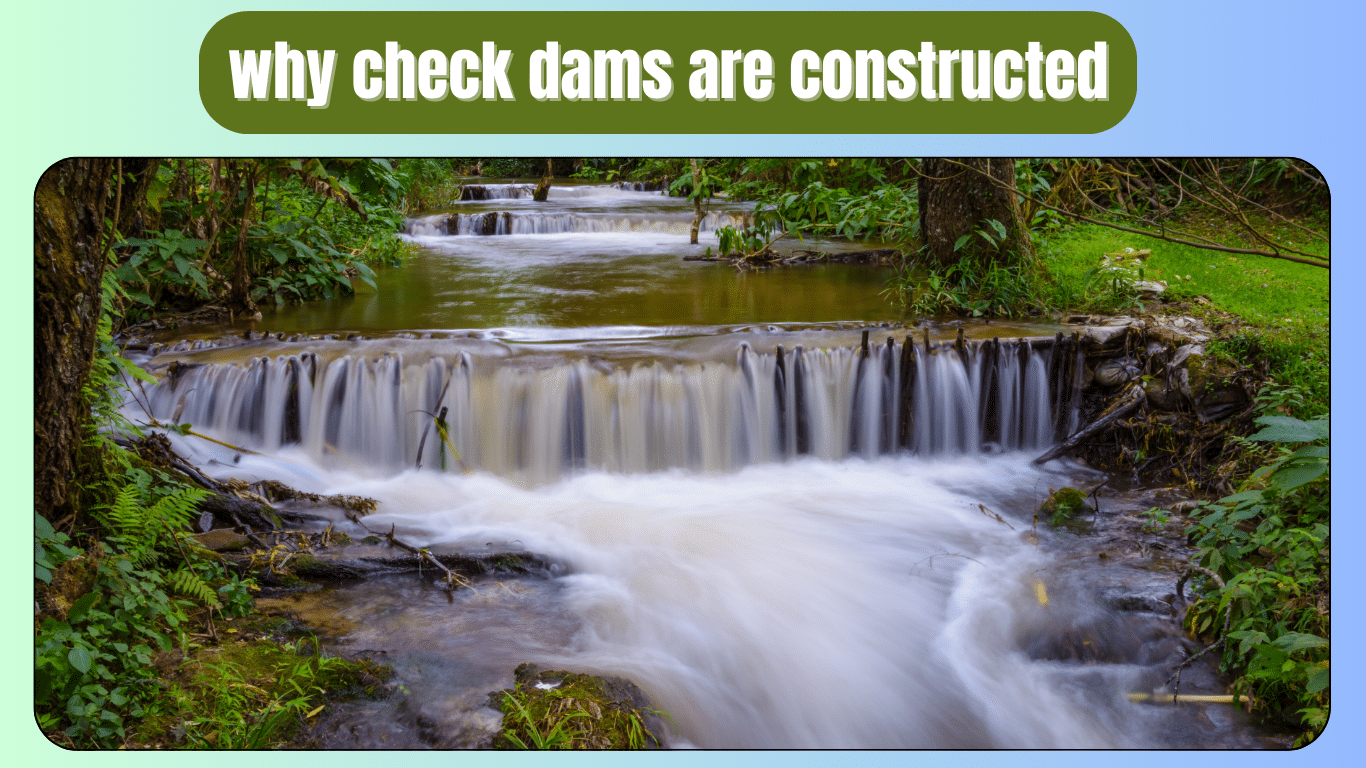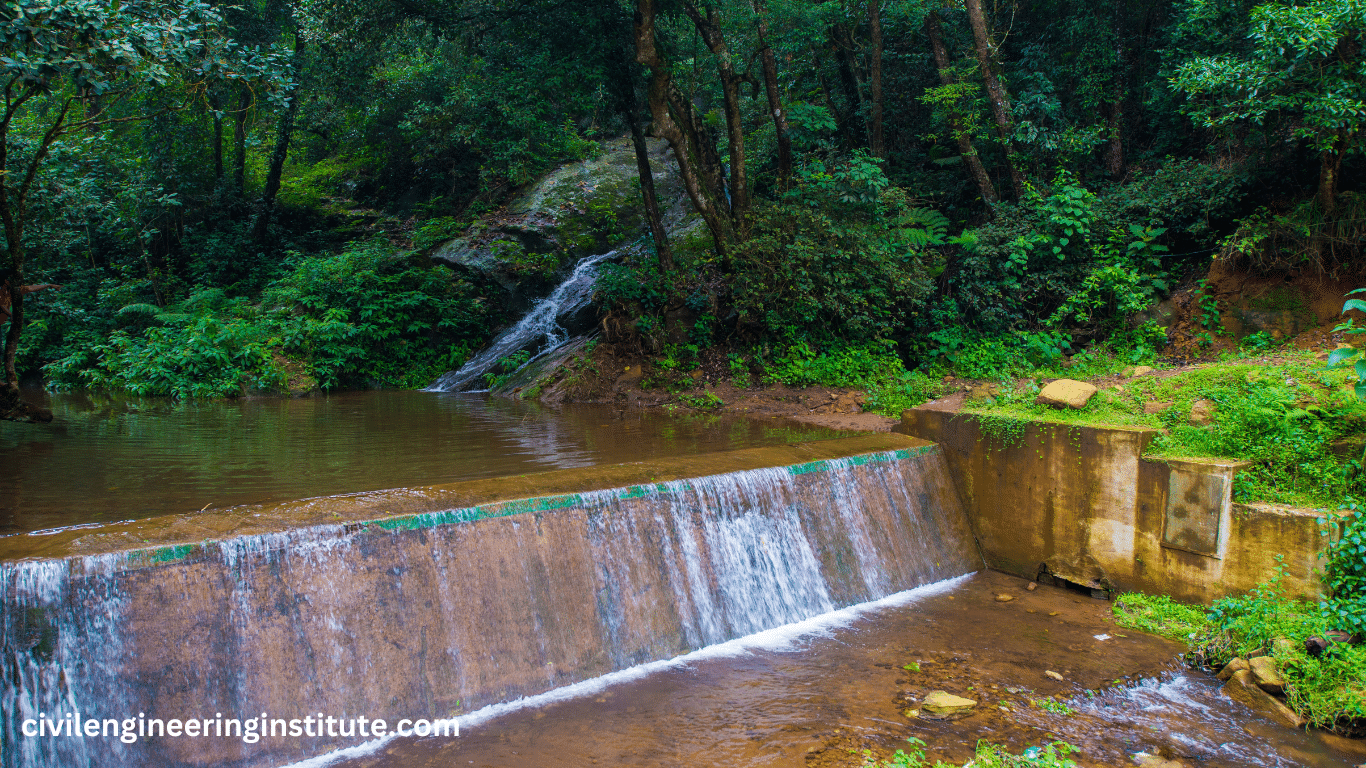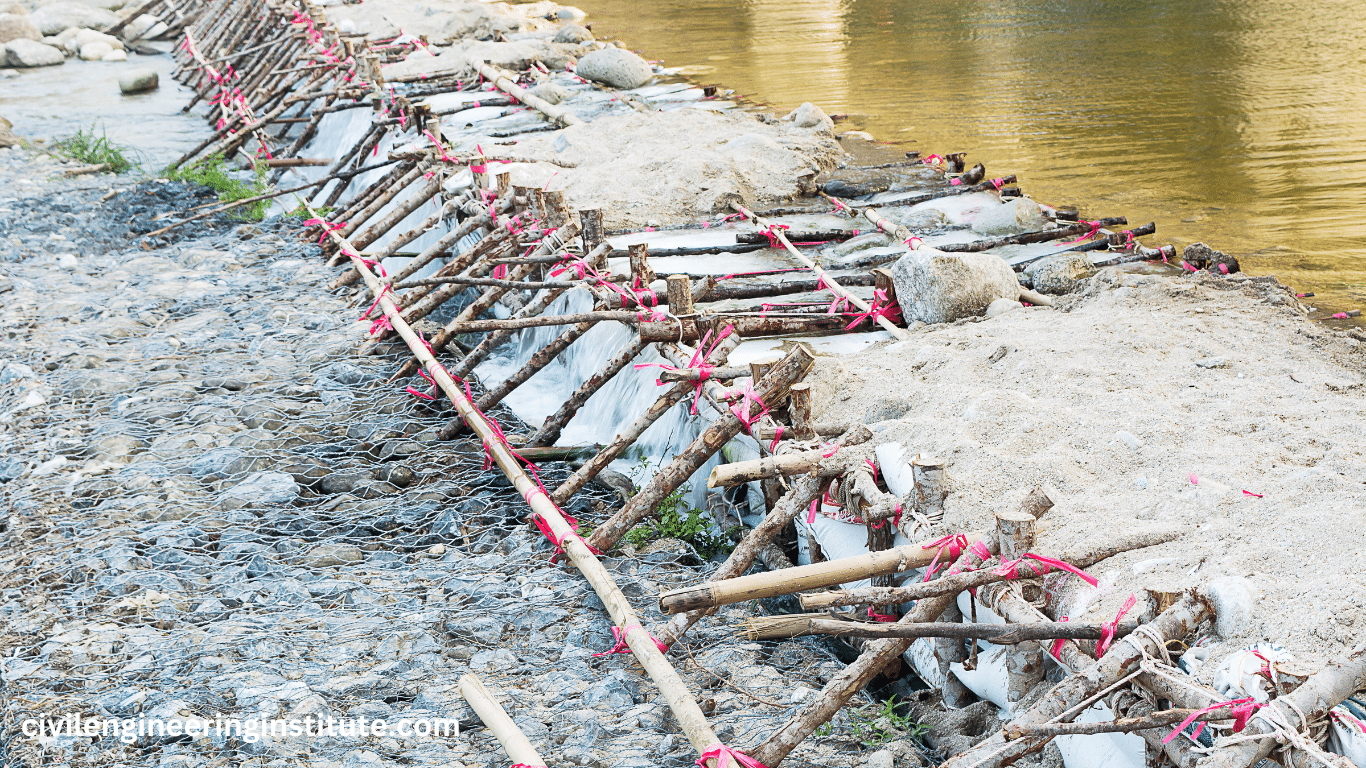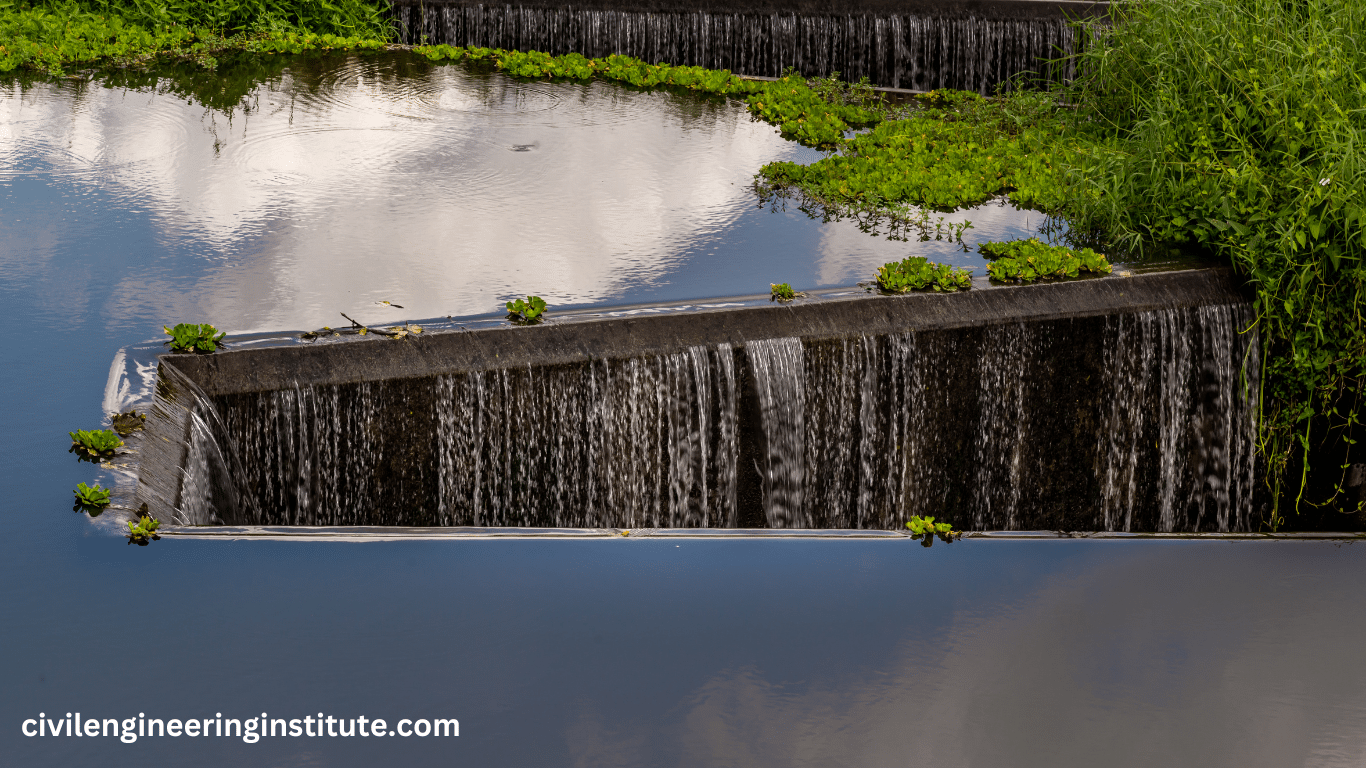Check dams are constructed for various reasons, but their primary purpose is to control erosion and manage water flow in rivers and streams. These dams are typically built across water channels to slow down the flow of water, allowing sediment to settle and preventing soil erosion downstream.
Additionally, check dams help replenish groundwater by trapping sediment and allowing water to percolate into the soil. They also play a crucial role in preventing flash floods by regulating the speed and volume of water during heavy rainfall. Overall, check dams are essential structures for maintaining the health of river ecosystems, protecting agricultural land, and reducing the risk of flooding in surrounding areas.
Why check dams are constructed: Understanding Their Importance
Check dams may seem like humble structures, but they play a vital role in managing water resources, preventing erosion, and mitigating the impacts of floods. In this article, we’ll explore why check dams are constructed, how they work, and their significance in various aspects of water management and environmental conservation.
What are check dams?
Check dams are small, low-height structures built across water channels or gullies to regulate the flow of water. They are typically constructed using natural materials such as rocks, boulders, or concrete blocks and are strategically placed along watercourses to slow down the flow of water and trap sediment.
Why are check dams constructed?
- Erosion Control
- Water Conservation
- Flood Control
- Soil Conservation
- Restoring Ecosystems
Erosion Control
One of the primary reasons for constructing check dams is to control erosion. When water flows downstream at high speeds, it can erode the soil and cause significant damage to the landscape. Check dams help to break the flow of water, reducing its velocity and allowing sediment to settle. This prevents soil erosion and helps to maintain the stability of riverbanks and hillsides.
Water Conservation
Check dams play a crucial role in conserving water resources. By slowing down the flow of water, these structures allow more water to infiltrate into the ground, replenishing groundwater reserves. This is especially important in arid and semi-arid regions where water is scarce, as check dams help to capture and store rainfall, making it available for vegetation and wildlife.
Flood Control
During heavy rainfall or storms, rivers and streams can swell rapidly, leading to flash floods. Check dams help to mitigate the impacts of floods by regulating the flow of water and reducing its volume downstream. By temporarily storing water behind the dam and releasing it gradually, check dams help to prevent downstream flooding and protect communities and infrastructure.
Soil Conservation
In addition to controlling erosion, check dams also help to conserve soil. By trapping sediment and preventing it from being washed away by the flow of water, these structures help to maintain soil fertility and prevent the loss of valuable agricultural land. This is particularly important in hilly and mountainous regions where soil erosion is a significant concern.
Restoring Ecosystems
Check dams can also be used to restore degraded ecosystems. By slowing down the flow of water and trapping sediment, these structures create small ponds or wetlands that provide habitat for aquatic plants and animals. This contributes to increasing biodiversity and restoring ecosystems’ natural balance after human activity has upset it.
Key points: Why check dams are constructed
The Purpose of Check Dams
Check dams serve several important purposes in water management and environmental conservation. Their primary function is to control erosion by slowing down the flow of water in rivers and streams. By reducing the velocity of water, check dams help to prevent soil erosion and maintain the stability of riverbanks and hillsides. Additionally, these structures play a crucial role in conserving water resources by allowing more water to infiltrate into the ground and replenishing groundwater reserves. Check dams also help to mitigate the impacts of floods by regulating the flow of water and reducing downstream flooding. Moreover, these structures contribute to soil conservation by trapping sediment and preventing the loss of valuable agricultural land.
Difference Between Dam and Check Dam
While both dams and check dams are structures built to control water flow, there are significant differences between the two. Dams are large-scale structures constructed across rivers or streams to impound water and create reservoirs for various purposes, such as water supply, irrigation, hydropower generation, and flood control. In contrast, check dams are smaller, low-height structures built across water channels or gullies to regulate the flow of water, control erosion, and conserve soil and water resources. Unlike dams, check dams do not create reservoirs; instead, they temporarily store water behind the dam and release it gradually to reduce downstream flooding and erosion.
Where to Construct a Check Dam
Check dams can be constructed in various locations, depending on the specific needs and objectives of the project. They are commonly built in areas prone to soil erosion, such as hilly and mountainous regions, agricultural lands, and watersheds with degraded ecosystems. Check dams are strategically placed along watercourses, streams, or gullies to slow down the flow of water and trap sediment. These structures can also be constructed in urban areas to manage stormwater runoff and prevent erosion in drainage channels and culverts.
Impact of Check Dams
Check dams have a significant impact on the environment and water resources. They help to control erosion, prevent soil loss, and conserve water by trapping sediment and allowing more water to infiltrate into the ground. Check dams also contribute to flood control by regulating the flow of water and reducing downstream flooding. Additionally, these structures create small ponds or wetlands that provide habitat for aquatic plants and animals, increasing biodiversity and restoring degraded ecosystems.
Can check dams increase groundwater?
Yes, check dams can increase groundwater recharge by allowing more water to infiltrate into the ground. When water flows downstream at high speeds, much of it is lost as runoff, which does not contribute to groundwater recharge. Check dams slow down the flow of water, allowing more water to percolate into the soil and replenish groundwater reserves. This is especially important in arid and semi-arid regions where groundwater is a vital source of water for drinking, irrigation, and agriculture.
Benefits of Constructing Dams
Constructing dams offers several benefits for water management, energy production, flood control, and irrigation. Firstly, dams provide a reliable source of water for drinking, irrigation, and industrial purposes by creating reservoirs that store water during periods of high flow for use during dry periods. Secondly, dams generate hydroelectric power by harnessing the energy of flowing water to produce electricity, contributing to energy security and reducing reliance on fossil fuels. Thirdly, dams help to mitigate the impacts of floods by regulating the flow of water and reducing downstream flooding. Lastly, dams facilitate irrigation by storing water for agricultural use, increasing crop yields, and supporting food security.
The biggest dam in the World
The Three Gorges Dam, located on the Yangtze River in China, is the largest in the world in terms of electricity generation capacity and total installed capacity. Completed in 2006, the Three Gorges Dam is an impressive feat of engineering, spanning 2.3 kilometers (1.4 miles) in length and standing 185 meters (607 feet) tall. The dam has a total generating capacity of 22,500 megawatts (MW) and plays a crucial role in flood control, hydropower generation, and navigation on the Yangtze River.
Disadvantages of Dams
Despite their benefits, dams also have several disadvantages and environmental impacts. Firstly, dams can disrupt the natural flow of rivers, altering ecosystems and habitats for aquatic plants and animals. Secondly, the construction of dams can lead to the displacement of communities and the loss of cultural heritage sites, as large areas of land are inundated by reservoirs. Thirdly, dams can trap sediment, reducing downstream sediment transport and affecting river morphology and sedimentation patterns. Lastly, dams can alter water temperature and nutrient levels downstream, impacting aquatic biodiversity and fisheries.
Another Name for Check Dams
Check dams are also known as sediment control structures, gully plugs, or erosion control dams. These terms are used interchangeably to describe structures built across water channels or gullies to regulate the flow of water, control erosion, and conserve soil and water resources.
Conclusion
In conclusion, check dams are simple yet effective structures that play a crucial role in managing water resources, preventing erosion, and mitigating the impacts of floods. By controlling the flow of water, these dams help to conserve soil, replenish groundwater, and restore ecosystems. As we continue to face challenges such as climate change and habitat degradation, the importance of checking dams for sustainable water management and environmental conservation cannot be overstated.
FAQs
Why are check dams important for erosion control?
Check dams are important for erosion control because they slow down the flow of water in rivers and streams, reducing its velocity and preventing soil erosion.
What are the benefits of constructing check dams for water conservation?
Constructing check dams helps in water conservation by allowing more water to infiltrate into the ground, replenishing groundwater reserves.
How do check dams help in flood prevention?
Check dams help in flood prevention by regulating the flow of water and reducing downstream flooding during heavy rainfall or storms.
What are the environmental advantages of building check dams?
Building check dams provides environmental advantages such as creating habitat for aquatic plants and animals, increasing biodiversity, and restoring degraded ecosystems.
Can checking dams improve groundwater recharge?
Yes, check dams can improve groundwater recharge by allowing more water to percolate into the ground, replenishing groundwater reserves.
What are the key reasons for constructing check dams in hilly regions?
The key reasons for constructing check dams in hilly regions include controlling erosion, conserving soil and water resources, and preventing landslides.
How do check dams contribute to soil conservation?
Check dams contribute to soil conservation by trapping sediment and preventing soil erosion, maintaining soil fertility, and preventing the loss of valuable agricultural land.
What role do check dams play in watershed management?
Check dams play a crucial role in watershed management by regulating the flow of water, controlling erosion, and conserving soil and water resources in the watershed.
Are there economic benefits to constructing check dams?
Yes, there are economic benefits to constructing check dams, including increased agricultural productivity, reduced damage from floods and erosion, and improved water supply for irrigation and drinking.
Where can I find resources on the construction and effectiveness of check dams?
Resources on the construction and effectiveness of check dams can be found in academic journals, government publications, and online resources from organizations specializing in water management and conservation.





